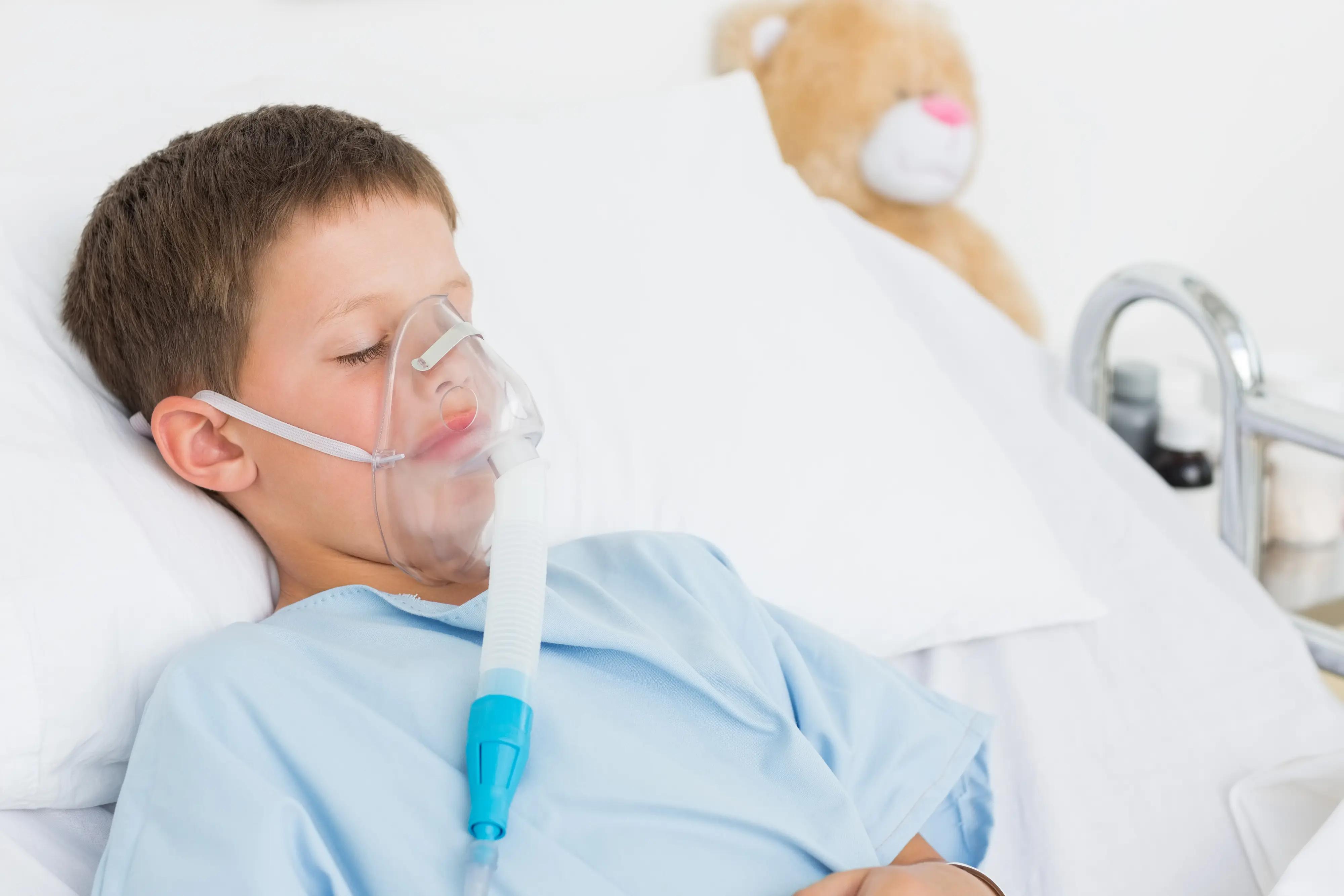A Look at the Latest News in Ventilator-Associated Infections
At IDWeek 2023, a look into managing VAIs in children.
(Editor's note: This article was originally published on our sister publication's website, Contemporary Pediatrics: https://www.contemporarypediatrics.com/view/ventilator-associated-infections-what-is-new-in-defining-diagnosing-and-treating-in-pediatrics)
Boy with oxygen mask in bed: © wavebreakmediaMicro - stock.adobe.com

Anna Christina Sick-Samuels, MD, MPH, assistant professor of pediatrics at Johns Hopkins School of Medicine in Baltimore, Maryland, held a lively presentation on the diagnostic challenges, prevention, and treatment of ventilator-associated infections (VAIs) during IDWeek 2023.
The term ventilator-associated infection encompasses ventilator-associated tracheobronchitis (VAT) and/or ventilator-associated pneumonia (VAP). Sick-Samuels poses that the term VAI is gaining popularity because there is more evidence to support a continuum between VAT and VAP and differentiating these two processes can be challenging.
Sick-Samuels highlights three main challenges with the diagnosis and management of VAI.
First, a positive endotracheal aspirate (ETA) culture does not equal infection, as detection of bacteria from the respiratory tract cannot differentiate infection from colonization. In fact, most endotracheal cultures will be “positive” within a few days of intubation whether or not a patient has clinical symptoms. Furthermore, biofilms and bacteria persist despite antibiotic treatment.
Second, clinicians are inclined to treat “positive cultures,” which leads to overtreatment with antibiotics. Studies have shown a great deal of variability in order practices of ETA cultures between hospitals as well as in processing and reporting practices between microbiology laboratories. The way in which results are reported strongly impacts antibiotic prescribing practices.
Third, the way in which ETA cultures are ordered, collected, and processed lacks standardization. For example, a survey of PICU clinicians conducted by Sick-Samuels and colleagues found that saline lavage was commonly used at many participating hospitals and none of the hospitals had existing protocols for how the samples were obtained. Indications for when an ETA culture would be obtained was also noted to be highly variable and lacked standardization. The frequency of ordering ETA cultures can also be variable. One single-center study of ETA cultures in a PICU noted that one-quarter of all ETA cultured in one year were ordered within 72 hours of a previous ETA culture having been ordered on that same patient; only 3% of those repeat cultures resulted in a change in management. Cultures are typically reported by day 3, so ordering a repeat ETA cultures within that time frame has low utility and should be avoided.
These challenges explain why ETA cultures are ripe for diagnostic stewardship. The Bright STAR Respiratory collaborative led by Sick-Samuels is a multi-institutional quality improvement initiative including 16 children’s hospitals aiming to establish diagnostic stewardship for respiratory cultures. Solutions to improve practices include clinical decision support tools to provide guidance to clinicians about when ETA cultures should be ordered, when VAI should be diagnosed, and how VAI should be treated.
Such quality improvement initiatives have been successful at Johns Hopkins Hospital and Boston Children’s Hospital, and have shown a decrease in ETA culture ordering and antibiotic days of therapy, without any changes in clinical outcomes including infection rate, ventilator-days, or hospital or ICU length of stay. Collectively, we need to arrive at consensus on when these tests should be used.
Reference
Sick-Samuels A. Ventilator associated infections: what is new in defining, diagnosing, and treating in pediatrics. IDWeek 2023. October 13, 2023. Boston, Massachusetts.
Beyond the Surface: Rethinking Environmental Hygiene Validation at Exchange25
June 30th 2025Environmental hygiene is about more than just shiny surfaces. At Exchange25, infection prevention experts urged the field to look deeper, rethink blame, and validate cleaning efforts across the entire care environment, not just EVS tasks.
A Controversial Reboot: New Vaccine Panel Faces Scrutiny, Support, and Sharp Divides
June 26th 2025As the newly appointed Advisory Committee on Immunization Practices (ACIP) met for the first time under sweeping changes by HHS Secretary Robert F. Kennedy Jr, the national spotlight turned to the panel’s legitimacy, vaccine guidance, and whether science or ideology would steer public health policy in a polarized era.
Getting Down and Dirty With PPE: Presentations at HSPA by Jill Holdsworth and Katie Belski
June 26th 2025In the heart of the hospital, decontamination technicians tackle one of health care’s dirtiest—and most vital—jobs. At HSPA 2025, 6 packed workshops led by experts Jill Holdsworth and Katie Belski spotlighted the crucial, often-overlooked art of PPE removal. The message was clear: proper doffing saves lives, starting with your own.